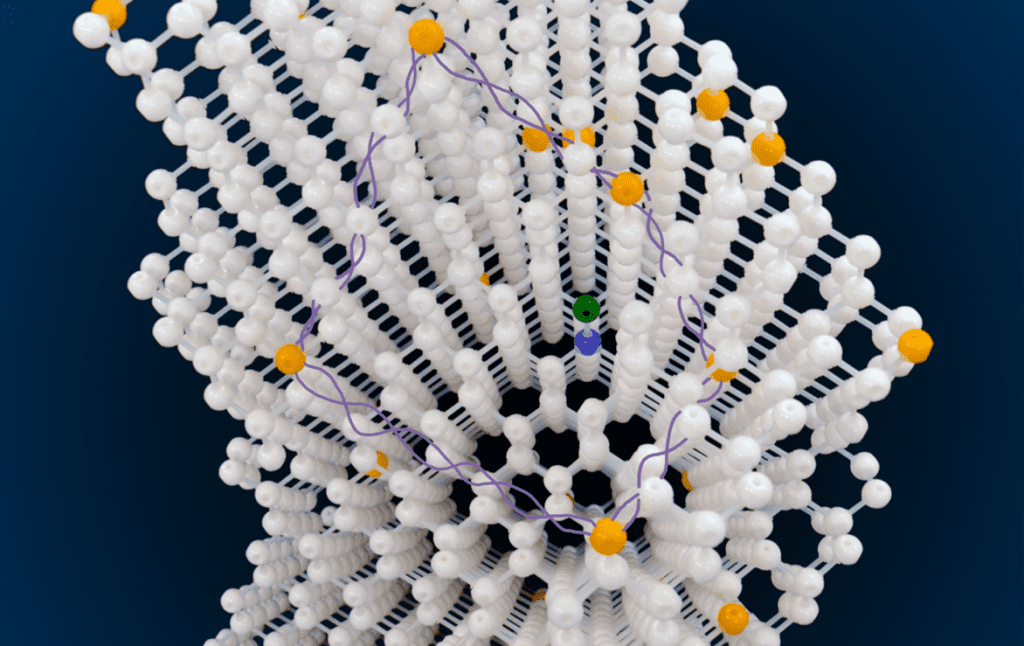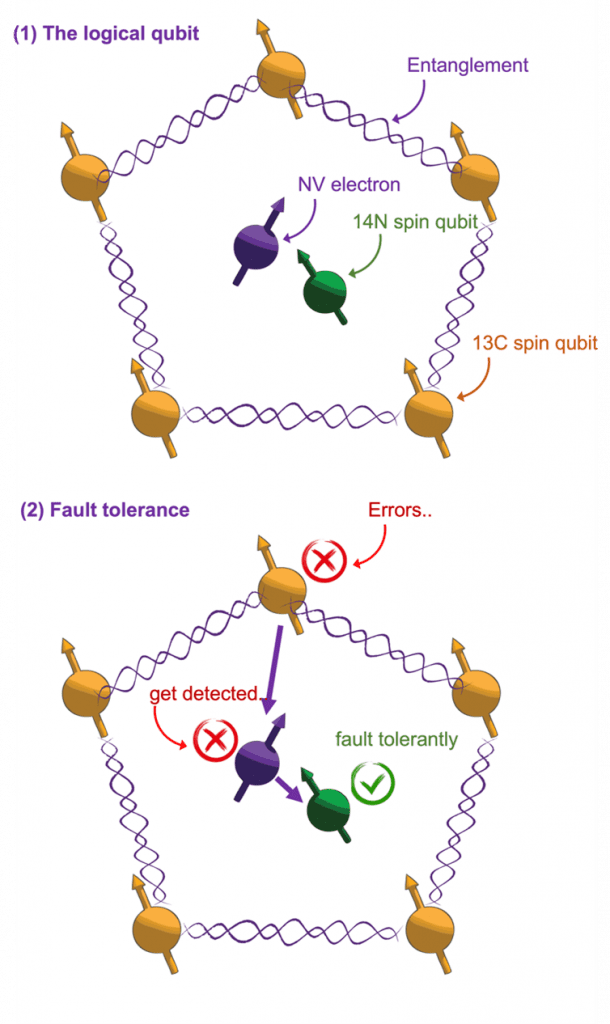05.05.2022Quantum Internet
QuTech and Fujitsu realise the fault-tolerant operation of a qubit

Researchers from QuTech, in collaboration with Fujitsu and Element Six, have demonstrated the fault-tolerant operation of a quantum bit using a quantum processor based on spin qubits in diamond. Future large-scale quantum computers must be fault tolerant, so that reliable computations can be performed with noisy components. This result opens the door to experimentally exploring the concepts of fault-tolerant quantum computation. The research has been published in Nature.
Quantum computers are anticipated to be able to solve important problems that are beyond the capabilities of classical computers. To realise useful computations, billions of operations will need to be performed on the quantum bits that make up the computer. However, the basic components of a quantum computer are inevitably imperfect. So how can we ensure that such a complex system can perform computations faithfully, without error?
Fault tolerance
The solution was proposed in the nineties: encode quantum information in ‘logical’ qubits that are spread out over many ‘physical’ qubits. This redundancy enables one to detect and correct errors, thus protecting the encoded information. A key challenge is to ensure that all operations are fault tolerant. This means that errors on a single or a few operations – for example any one of the physical qubits inadvertently flipping its state – should not corrupt the information encoded in the logical qubits. Such fault tolerance enables reliable computation with noisy components and is the key to realising quantum computers.

A diamond logical qubit
The researchers at QuTech—a collaboration between the TU Delft and TNO—have now realised such a logical qubit using their recently introdued 29-qubit quantum processor. Their qubits consist of electron and nuclear spins associated with a nitrogen-vacancy center in diamond. These spin qubits can operate at relatively high temperatures up to 10 Kelvin and, by using ultrapure diamonds grown by Element Six, the team has previously shown that they can store quantum states coherently for minutes.
“We used 5 nuclear-spin qubits to encode one logical qubit and used two additional qubits to perform the measurements that identify errors”, says Mohamed Abobeih, lead author. A recent theoretical advance by researchers from the University of Southern California has shown that such a 7-qubit system is the smallest possible configuration that allows for fault-tolerant error correction.
Robust to errors
The team showed that this logical qubit could be operated fault tolerantly. “First, to encode the logical qubit, we had to invent a new encoding scheme that is optimized for our processor”, says co-author Yang Wang. After that the team could show that the encoding, various basic qubit operations and the measurements used to identify errors could all be performed fault tolerantly. “Crucially, a single fault anywhere in the system does not lead to the corruption of the logical qubit information”, says Abobeih.
An important challenge that the team addressed was to process the information about errors in real time. “Because of the long coherence times of our qubits we could process the outcomes of the measurements ‘on the fly’, while the processor was running”, says Tim Taminiau who supervised the project. “Very few systems around the world currently have this essential capability”.
More advances are needed on the path towards useful quantum computation. “While this is an exciting step forward, especially for solid-state spin qubits, there is still a long way to go for large-scale fault-tolerant computation”, says Barbara Terhal, who co-supervised the research. “Truly suppressing errors will require further improvements in the number of qubits and the quality of operations”.

New territory
With this demonstration, the quantum processors at QuTech have entered a new territory. “It is exciting to see that we can now operate fault tolerantly on logical qubits”, says Taminiau. “Until now, we were limited to operating on physical qubits, for which a single error can mean your entire computation has failed. It now becomes possible to experimentally investigate the concepts of fault tolerance.”
To realise larger quantum processors, the researchers aim to take a modular approach. Small processors – similar to the one demonstrated in this work – can be linked together into a single larger processor through optical quantum interconnects. “Such optical connections have been pioneered by Ronald Hanson, also at QuTech”, says Taminiau. “Making many copies of small processors and connecting them together into one large quantum computer, is a flexible way to address the challenge of scaling up the number of qubits”.
Realising such modular quantum processors is the focus of a larger research effort at QuTech and of its collaboration with Fujitsu. The team takes a full stack approach, in which not only improved quantum bits are studied, but also the required classical control electronics, scalable fabrication methods and new types of quantum computer architectures. “Making the next big step will require bringing together scientists, engineers and industry”, says Taminiau.
Publication details
Abobeih et al. (2022), Fault-tolerant operation of a logical qubit in a diamond quantum processor, Nature, DOI: 10.1038/s41586-022-04819-6

